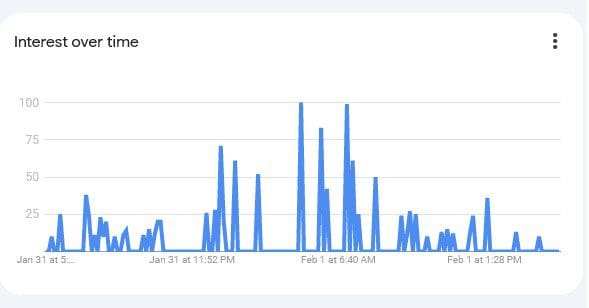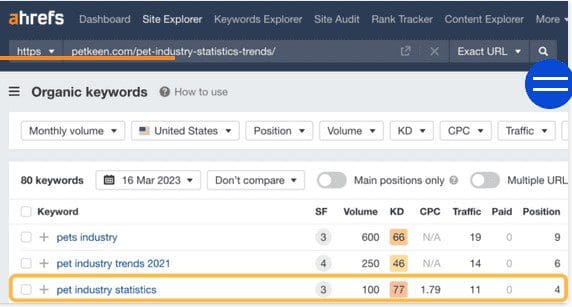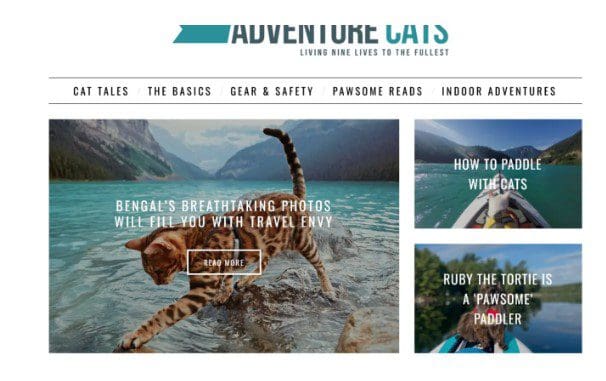Pet care blogs have grown in popularity in recent years, reflecting the growing passion for responsible pet ownership and the desire to provide our furry friends with the best possible care. As more individuals embrace pets as integral members of their families, the demand for reliable information on pet care has intensified.
This guide aims to empower you to launch your very own pet care blog, leveraging the power of Divi as a page builder, WordPress as a content management system (CMS), and Cloudways for hosting.
1 Why Start a Pet Care Blog?
The digital landscape has become a hub for pet enthusiasts seeking valuable insights and advice on how to enhance the well-being of their beloved companions.
Pet care blogs cater to a diverse audience, including seasoned pet owners, curious beginners, and passionate animal lovers.
The rising trend of adopting pets and the increasing need for reliable information make this the perfect time to contribute to the growing community of pet care bloggers.
2 Building Community in the Pet Care Niche
Launching a pet care blog goes beyond a mere trend; it’s a commitment to sharing knowledge and experiences that can positively impact the lives of pets and their owners.
The unique bond between humans and animals allows bloggers to foster a sense of community and provide practical insights.
Whether it’s sharing grooming tips, nutritional advice, or heartwarming anecdotes, your contributions can make a significant difference in the lives of your readers and their furry companions.

In the following sections, we’ll delve into the step-by-step process of setting up your pet care blog using Divi, WordPress, and Cloudways. From defining your niche to optimizing for search engines, this guide will equip you with the knowledge and tools to embark on a successful blogging journey in the pet care niche.
Let’s get started!
Preparations Before Setting Up
Defining Your Niche Within the Pet Care Industry
1 Choosing Specific Areas of Expertise

Selecting the focus of your pet care blog is like choosing the heart of your content.
Think about what aspect of pet care resonates with you the most. Whether providing care tips for dogs, delving into the art of cat grooming, or exploring the world of exotic pets, your chosen niche should align with your passion and expertise.
Let your love for a specific area shine through in your blog, making your content genuine and relatable.
For example, if you decide on dog care as your expertise:
- Share insights on effective training methods.
- Provide recommendations for nutritious dog diets.
- Review products that enhance a dog’s well-being.
2 Identifying Target Audience
Understanding who you want to reach with your blog is vital.
Are you catering to experienced pet owners, enthusiasts eager to learn more, or beginners stepping into the world of pet care?
Tailoring your content to a specific audience ensures your blog speaks directly to their needs.
If your focus is on beginners:
- Create content that explains fundamental pet care practices.
- Introduce various pet breeds in an accessible manner.
- Use friendly language devoid of jargon to make your blog beginner-friendly.
By defining your niche and target audience, your blog becomes a valuable resource tailored to the interests and needs of your readers.
Research and Planning
1 Market Analysis for Chosen Pet Care Niche
Conducting a market analysis involves understanding the landscape of your chosen niche. Look at trends, popular topics, and gaps in existing content. This analysis guides you in creating content that is relevant and valuable to your audience.
Some tools you can use for this are;
Google Trends:

- Trend Identification: Google Trends allows you to identify trending topics within your niche. You can observe whether interest is increasing, decreasing, or remaining stable over time.
- Seasonal Patterns: Recognize any seasonal patterns or recurring trends related to your niche. This helps in planning content or promotional strategies at the right times.
- Geographical Insights: Understand geographical variations in interest. Google Trends provides regional data, helping you tailor your content or marketing efforts to specific locations.
- Related Queries: Explore related queries to discover additional topics or sub-niches gaining traction. This insight can guide your content strategy and expansion plans.
Paid SEO Tools:

- Keyword Research: Paid SEO tools offer comprehensive keyword research capabilities. Identify relevant keywords in your niche, along with data on search volume, competition, and potential traffic.
- Competitor Analysis: Analyse competitors’ websites to understand their keyword strategies, top-performing content, and backlink profiles. This helps you identify opportunities and refine your approach.
- Backlink Insights: Explore backlink data to understand the link-building landscape within your niche. Identify authoritative sources and potential collaboration opportunities.
- Content Gap Analysis: Identify content gaps by comparing your website with competitors. This helps you discover topics that your competitors have covered and areas where you can provide unique value.
By leveraging these tools at a high level, you can gain a comprehensive understanding of your niche’s landscape, enabling you to make informed decisions in content creation, SEO optimization, and overall strategy.
We recommend trying out KWFinder as we have found their search volume statistics to be the most accurate.
2 Identifying Competitors and Unique Selling Points
Explore other pet care blogs within your niche. Identify what they offer and find your unique angle. Differentiating yourself sets your blog apart and attracts readers seeking something distinctive.
You can see a list of some pet care blogs here.
3 Choosing a Catchy and Relevant Blog Name
Importance of a Memorable and Relevant Blog Name
Your blog’s name is its identity. A memorable and relevant name captures attention and reflects your niche.
Domain names are not expensive and usually cost around $12 per year.
You would be the best person to name your pet care blog but if I could provide some advice, I would suggest starting with a general search to see what is available. You can try a site like instant domains to get a snapshot of available domains in your topic.

Tips for Brainstorming Creative and Unique Names
- Try to get a .com domain name.
- Consider keywords related to your niche.
- Play with words and phrases that evoke your blog’s essence.
- Ensure the name is easy to remember.
Checking Domain Availability and Considering SEO Implications
Verify if your chosen name has an available domain. Opt for a name that aligns with SEO practices, incorporating relevant keywords.
Top 5 Domain Registrars for Your Digital Success
4 Setting Realistic Goals and Objectives for the Blog
Establish clear goals for your pet care blog. Whether it’s reaching a specific number of monthly readers or collaborating with pet brands, setting realistic objectives provides a roadmap for success.
It helps you stay focused and motivated as you embark on your blogging journey.
Setting Up Your Blog Infrastructure
Choosing WordPress as the CMS

1 Why WordPress?
WordPress stands out as a user-friendly and powerful Content Management System (CMS) that simplifies the process of building and managing your blog. Its benefits make it a popular choice among bloggers.
- User-Friendly Interface: WordPress offers an intuitive dashboard, making it easy for beginners to navigate and manage their content.
- Customization Options: With numerous themes and plugins, you can personalise your blog’s appearance and functionality without coding skills.
- SEO-Friendly: WordPress is designed with search engine optimization (SEO) in mind, helping your blog rank higher on search engine results.
2 Installing WordPress on Cloudways Hosting

Now that you’ve chosen WordPress as your CMS, the next step is to host it on a reliable platform like Cloudways. Here’s a step-by-step guide to getting started:
- Sign Up for Cloudways: Create an account on Cloudways to access their hosting services.
- Select Your Hosting Plan: Choose a plan based on your blog’s anticipated traffic and needs. Feel free to start with the lowest plan as that will be good enough to run most blogs.
- Launch a WordPress Application: Cloudways simplifies the process by allowing you to launch a WordPress application with just a few clicks.
- Configure Server and Application Settings: Customise your server and application settings, including server location and database preferences.
3 Configuring Essential Settings for Security and Performance
Ensuring your blog is secure and performs well is crucial for a positive user experience. Take these essential steps:
- Install a Security Plugin: Use a reputable security plugin like iThemes to safeguard your blog against potential threats. Configure settings to enhance protection.
- Optimise Images and Files: Compress images and files to improve page loading times. Consider using plugins like wpsmush to automate this process.
- Enable Caching: Utilise caching plugins like Perfmatters to store static versions of your pages, reducing server load and speeding up site performance.
By choosing WordPress as your CMS and hosting it on Cloudways, you lay the foundation for a robust and efficient blog. Configuring essential settings enhances security and ensures optimal performance, creating a positive experience for your visitors
Essential Plugins and Pages for Pet Care Blog
1 Essential Pages for Every Blog
- Homepage
Your homepage is the first impression visitors get of your blog. It serves as a gateway to your content, providing a snapshot of what your blog is about. Make it visually appealing and easy to navigate. - About Page
The About page is where you introduce yourself to your readers. Share your passion for pet care, your expertise, and what inspired you to start the blog. Building a personal connection with your audience fosters trust. - Contact Page
Make it simple for your readers to reach out to you. The Contact page should include a form or clear contact information. This accessibility encourages reader engagement and feedback. - Privacy Policy Page
Even small blogs need a privacy policy. Outline how you collect, use, and protect visitor information. Many visitors look for this page to ensure their privacy is respected. - Terms and Conditions
Define the rules and guidelines for using your blog. This page sets expectations for both you and your readers, promoting a positive and respectful online community.
2 Must-Have Plugins for a Pet Care Blog
SEO Plugins for Optimising Content
SEO, or Search Engine Optimization, is crucial for your blog’s visibility. SEO plugins help you optimise your content for search engines.
Consider using plugins like RankMath to guide you in incorporating relevant keywords and improving your blog’s search engine ranking.
You can read through our guide on the 8 best SEO plugins if you want to see some alternatives.
Social Media Sharing Plugins
Social media is a powerful tool for expanding your blog’s reach. Social media sharing plugins allow readers to easily share your content on platforms like Facebook, Twitter, and Instagram. This increases your blog’s exposure and brings in new audiences.
Contact Form Plugins for Reader Interaction
Encourage reader interaction by having a user-friendly contact form on your blog. Plugins like WPForms or Contact Form 7 simplify the process of creating and managing contact forms.
This feature facilitates communication and helps build a community around your pet care blog.
If you are using Divi as your page builder, you can use their contact form.
By incorporating these essential pages and plugins, you create a well-rounded and user-friendly blog. The pages provide essential information and set the tone for your blog, while plugins enhance functionality and optimise your content for better visibility.
Designing Your Blog with Divi

Divi, a Powerful and User-Friendly Page Builder
Divi is more than just a tool; it’s your creative companion in building a visually stunning and user-friendly blog.
This powerful page builder, designed for WordPress, empowers you to design your blog without the need for coding skills.
With Divi, the possibilities are endless, making it a top choice for bloggers seeking flexibility and ease of use.
1 Installing and Activating Divi on WordPress
Getting Divi up and running on your WordPress site is a straightforward process. Follow these steps:
- Purchase Divi from Elegant Themes: You will need a licence to use Divi as it is a premium them. You have two choice either $89 per year or a once off $287.
- Download Divi from Elegant Themes: Download the Divi theme from your Elegant Themes Dashboard.
- Access Your WordPress Dashboard: Log in to your WordPress dashboard.
- Navigate to Themes: In the Appearance section, click on “Themes.”
- Add New Theme: Click on “Add New” and “Upload Theme”
- Install and Activate: Once you find Divi, click “Install” and then “Activate.”
Now, you’re ready to harness the full potential of Divi for your pet care blog.
2 Customising Your Pet Care Blog with Div
Divi’s drag-and-drop features redefine simplicity in blog design. No need to be a tech wizard – follow these steps:
- Access Divi Builder: When creating or editing a page, click on “Enable Divi Builder.”
- Choose a Premade Layout or Start from Scratch: Divi offers pre-designed layouts for a quick start. Alternatively, start with a blank canvas.
- Drag and Drop Elements: Add elements like text, images, buttons, and more by dragging and dropping them onto your page.
- Customise Each Element: Click on any element to customise its appearance, text, and settings. Divi’s real-time editing allows you to see changes instantly.
3 Creating Visually Appealing and Responsive Pages
Ensuring your blog looks great on all devices is essential for a positive user experience. Divi simplifies this process:
- Responsive Design: Divi automatically ensures your design adapts to various screen sizes, from desktops to smartphones.
- Preview Your Design: Use Divi’s preview options to see how your blog will appear on different devices.
- Optimise Images: Compress images within Divi to maintain fast loading times on all devices.
With Divi, you’re not just designing a blog; you’re crafting a visually appealing and responsive experience for every visitor.
Let your creativity flow as you shape your pet care blog with Divi’s intuitive tools.
Content Creation and Strategy

1 Developing a Content Plan for a Pet Care Blog
Creating a Content Calendar
Plan your content ahead of time with a content calendar. Here’s how to do it:
- Map Out Your Topics: Identify the key themes or topics you want to cover on your blog.
- Set a Schedule: Decide how often you’ll post content. Whether it’s weekly or bi-weekly, consistency is key.
- Assign Dates: Allocate specific dates to each topic. This helps you stay organised and ensures a steady flow of content.
Balancing Different Types of Content (How-tos, Tips, Personal Experiences)
Variety keeps your blog interesting. Balance different types of content to cater to diverse reader preferences:
- How-tos: Provide step-by-step guides for specific pet care tasks.
- Tips: Share valuable tips and tricks that enhance pet well-being.
- Personal Experiences: Connect with your audience by sharing your own stories and experiences in the world of pet care.
2 Using Divi for Creating Engaging Content
Showcasing Pet Care Tips through Divi Modules
Divi offers specialised modules that make presenting pet care tips engaging:
- Text Module: Share concise and informative text-based tips.
- Image Module: Showcase visuals for a better understanding of your advice.
- Video Module: Embed videos for a dynamic presentation of tips or demonstrations.
Utilising Divi’s Design Capabilities for Visually Appealing Content
Enhance the visual appeal of your content using Divi’s design capabilities:
- Custom Fonts and Colors: Choose fonts and colours that resonate with your blog’s theme.
- Image Galleries: Display multiple images in an attractive gallery format.
- Animations: Add subtle animations to captivate your audience.
By developing a solid content plan and leveraging Divi’s features, you create a dynamic and visually appealing blog that caters to different preferences and keeps your audience engaged.
SEO Best Practices

1 Keyword Research for Pet Care Niche
Keyword research is crucial for your blog’s visibility. Here’s how to do it:
- Identify Core Topics: Start by listing the main topics related to pet care, such as grooming, nutrition, or training.
- Use Keyword Tools: Tools like Google Keyword Planner or KWFinder can help you discover relevant keywords.
- Long-Tail Keywords: Consider long-tail keywords – specific phrases that your audience might use when searching for pet care information.
2 Strategic Keyword Integration in Blog Posts Using Divi
Integrating keywords seamlessly into your content is key. Here’s how to do it with Divi:
- Incorporate Keywords Naturally: Place keywords in your titles, headings, and throughout your content. However, ensure it reads naturally.
- Use Divi’s Text Module: Utilise Divi’s Text Module to add keyword-rich content. It’s simple – just type in your text and ensure your keywords are naturally integrated.
- Image Alt Text: When adding images through Divi, include descriptive alt text with relevant keywords.
3 Optimising for Better Search Engine Visibility
Enhance your blog’s visibility with optimised meta tags and descriptions:
- Edit Snippet in Divi: When creating a post with Divi, use the Yoast SEO plugin to edit your snippet. Craft a compelling meta title and description.
- Include Keywords: Ensure your target keywords are present in the meta title and description but maintain readability.
- Call to Action: Encourage clicks by adding a clear call-to-action in your meta description.
By following these SEO best practices, you’ll increase your blog’s chances of being discovered by a wider audience interested in pet care.
Engaging with Your Audience

1 Building a Community
Building a community around your pet care blog is essential for growth. Here’s how to do it:
- Enable Comments: Allow readers to comment on your blog posts. Respond to comments to foster a sense of community.
- Social Media Integration: Share your blog posts on social media platforms. Encourage readers to follow and engage with your content on these platforms.
- Create Social Media Groups: Establish dedicated groups on platforms like Facebook where pet enthusiasts can share their experiences and ask questions.
2 Encouraging Reader Interaction
Encouraging interaction keeps your audience involved. Here’s how to do it:
- Ask Questions: Pose questions in your blog posts to encourage readers to share their thoughts in the comments.
- Run Polls and Surveys: Use tools like Google Forms or social media polls to gather feedback on what your audience wants to see.
- Respond Promptly: Respond to comments and messages promptly to show your readers that their input is valued.
By actively engaging with your audience through comments and social media, you create a vibrant community around your pet care blog. Encouraging interaction and feedback strengthens the connection between you and your readers, fostering a supportive environment for learning and sharing.
3 Set Up an Email List
Building a successful pet care blog is not just about creating content; it’s also about nurturing relationships with your readers and turning them into loyal followers. One of the most effective ways to do this is by setting up an email list. Through email marketing, you can share personalized content, promote products or services, and even generate income through affiliate marketing or sponsored promotions.
Why MailerLite for Email Marketing?
MailerLite is a powerful yet user-friendly email marketing platform that allows you to easily build, manage, and engage your email subscribers. Whether you’re just starting or have a growing audience, MailerLite provides all the tools you need without overwhelming you with unnecessary complexity.
Here’s why MailerLite is a great choice for your pet care blog:
- Ease of Use: With a drag-and-drop editor, creating beautiful and responsive email campaigns is simple. No coding skills required!
- Automated Email Campaigns: Set up automated workflows, such as welcome sequences or newsletter blasts, to stay connected with your readers even when you’re not online.
- Segmentation: MailerLite lets you segment your email list, ensuring you send the right message to the right group. For example, you can create segments for pet owners interested in grooming tips or those who want advice on pet nutrition.
- Monetization Opportunities: Promote affiliate products, offer paid subscriptions, or sell courses directly through your email list. MailerLite’s automation features make it easy to nurture your subscribers and convert them into paying customers.
How to Set Up Your Email List in MailerLite
- Create a MailerLite Account: Head over to MailerLite and sign up for a free account. The free plan includes up to 1,000 subscribers, which is perfect for new bloggers.
- Design Your First Opt-In Form: Once your account is set up, create an opt-in form to capture email addresses. MailerLite offers customizable forms that integrate seamlessly with your blog. Place the form in strategic locations, such as at the end of blog posts or in the sidebar, encouraging visitors to sign up for pet care tips or exclusive content.
- Build a Welcome Email Sequence: Welcome your new subscribers with a friendly email introducing yourself and your blog. You can also send them a freebie, such as a “Pet Care Starter Guide” or an exclusive discount on pet products, to create a great first impression.
- Send Regular Newsletters: Keep your audience engaged by sending out weekly or bi-weekly newsletters. Share your latest blog posts, pet care tips, and exclusive offers. You can also promote affiliate products that align with your readers’ interests, creating an additional income stream.
- Analyze and Optimize: MailerLite’s analytics dashboard will help you track how your emails are performing. Check metrics like open rates and click-through rates to see what content resonates with your audience and adjust your strategies accordingly.
Monetization Strategies

Once your blog is up and running, there are various ways to make money with a Pet Care Blog. Let’s explore a few of them:
1 Affiliate Marketing with Pet-Related Products
- Understand Affiliate Marketing: Join affiliate programs of pet-related products. You earn a commission for every sale made through your unique affiliate link.
- Choose Relevant Products: Promote products that align with your blog’s niche. For example, if your blog focuses on cat care, consider affiliating with cat food or grooming product brands.
- Transparent Recommendations: Be transparent with your audience about affiliate links. Only promote products you genuinely believe in.
2 Sponsored Content and Collaborations
- Collaborate with Brands: Brands may pay you to create content featuring their products or services. Ensure collaborations align with your blog’s theme and resonate with your audience.
- Maintain Authenticity: Be authentic in sponsored content. Your audience values honesty, so only endorse products or services you genuinely support.
- Disclose Collaborations: Clearly disclose when content is sponsored or a collaboration to maintain transparency with your audience.
3 Offering Pet Care Services or Products
- Identify Your Skills: If you have expertise in a specific aspect of pet care, offer services such as pet training sessions, grooming tutorials, or consultations.
- Create Products: Develop and sell pet care-related products, such as e-books, online courses, or merchandise.
- Promote on Your Blog: Use your blog as a platform to promote your services or products. Highlight the value you offer to potential customers.
Exploring these monetization strategies can turn your passion for pet care into a source of income. Whether through affiliate marketing, sponsored content, or offering services/products, it’s essential to maintain authenticity and provide value to your audience.
Pet Care Blog Niche Examples
Here are some examples of successful pet care niche blogs;
1 DogFood Advisor

Dog Food Advisor is a shining example of a successful pet care niche blog. Launched in 2008 by Marty Becker, a dentist with a background in chemistry, the site has become a go-to resource for dog owners looking for unbiased information about dog food.
What makes Dog Food Advisor so successful?
- Focus on a specific niche: Dog Food Advisor doesn’t try to be all things to all pet owners. It laser-focuses on dog food, providing in-depth reviews of thousands of brands. This narrow focus allows the site to build deep expertise and trust with its target audience.
- Independent and unbiased reviews: Dog Food Advisor’s reviews are not swayed by advertising or marketing dollars. The site uses a proprietary rating system that takes into account the quality of ingredients, nutrient content, and recall history of each dog food brand. This transparency and independence are highly valued by dog owners.
- Value-added content: Dog Food Advisor goes beyond simply reviewing dog food. The site also offers a wealth of educational content on topics such as dog nutrition, feeding guidelines, and homemade dog food recipes. This additional content makes the site even more valuable to dog owners.
- Strong community: Dog Food Advisor has fostered a strong community of dog owners through its active forum and social media presence. This community provides a valuable resource for dog owners to ask questions, share tips, and support each other.
Dog Food Advisor generates revenue through affiliate marketing, selling its own line of dog food supplements, and offering premium membership services. This diversified revenue stream ensures the site’s long-term sustainability.
2 Adventure Cats

AdventureCats.org was created as a resource for people looking for safe ways to explore the great outdoors with their feline friends.
What makes it successful?
- Personal touch: They have a section that publishes the stories of their readers travels with their cats. This removes the artificialness and instead brings in relatability.
- Covering the Niche: They know their niche and they stick to it. Covering all aspects of one niche helps to build authority on the topic.
AdventureCats makes money through affilliate links, adverstising and their own products.
3 PetPlay

Pet P.L.A.Y. (“Pet Lifestyle and You”) isn’t just another dog blog. It’s a thriving community for modern pet owners seeking comprehensive information, engaging stories, and, of course, luxurious eco-friendly goodies for their furry besties.
What makes it successful?
- Hyper-Targeted Content: Pet P.L.A.Y. goes deep into the world of canine care, from breed-specific concerns to cutting-edge training techniques. They tackle both the everyday (like nail trimming tips) and the unexpected (think travel hacks for anxious pups). This laser focus on dogs resonates with owners seeking specific solutions and builds trust through targeted expertise.
- Building Community: They feature guest posts from fellow dog lovers, showcasing heartwarming stories of rescue, overcoming challenges, and simply celebrating the joys of life with a furry companion. This fosters a sense of community and keeps readers coming back for more.
Pet P.L.A.Y. makes money through the sales of their own products.
To Recap
Key Steps in Starting a Pet Care Blog
- Niche Definition: Begin by defining your niche within the pet care industry. Choose specific areas of expertise and identify your target audience.
- Research and Planning: Conduct market analysis, identify competitors, choose a catchy blog name, and set realistic goals.
- Blog Infrastructure: Choose WordPress as your CMS, host it on Cloudways, and configure essential settings for security and performance.
- Essential Pages and Plugins: Create essential pages like the homepage, about, contact, privacy policy, and terms and conditions. Use plugins for SEO, social media sharing, and reader interaction.
- Designing with Divi: Integrate Divi as your page builder, customise your blog using drag-and-drop features, and create visually appealing, responsive pages.
- Content Creation and Strategy: Develop a content plan with a calendar, balance different types of content, showcase pet care tips using Divi, and utilise design capabilities for engaging content.
- SEO Best Practices: Conduct keyword research, integrate keywords using Divi, and optimise meta tags and descriptions for better search engine visibility.
- Engaging with Your Audience: Build a community through comments and social media, and encourage reader interaction and feedback.
- Monetization Strategies: Explore affiliate marketing, sponsored content, and collaborations. Consider offering pet care services or products.
Starting a pet care blog is an exciting journey filled with learning opportunities. Stay curious, explore new trends, and continue refining your skills.
Engage with your audience, adapt to changes, and most importantly, enjoy the process of sharing your passion for pet care with the world.
Remember, growth is a continuous journey, and each step you take contributes to the success of your blog.
Happy blogging!



